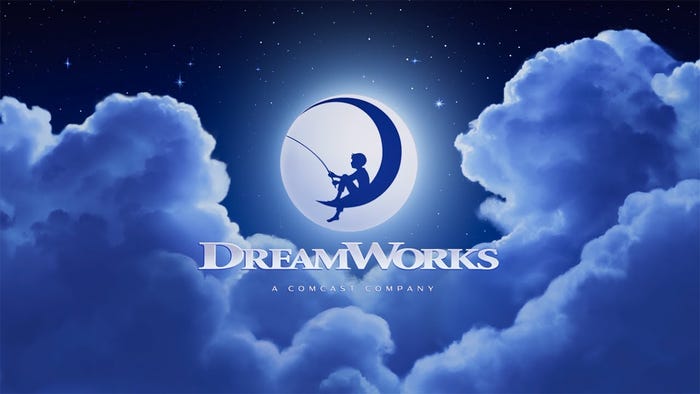
Featured Blog | This community-written post highlights the best of what the game industry has to offer. Read more like it on the Game Developer Blogs.
Grinding Social Games into Involvement
This essay concerns an exploration about the relation between social games, meaning giving practices, rewards, immersion and a ten feet long pole. This relation leads to the conclusion that there is still a large horizon to explore for social games.

 Zynga, sure you’ve heard about them. Actually, a few hundred million of you out there probably have. This social network game developer enjoys great successes with every sort of –Ville game you could think of.
Zynga, sure you’ve heard about them. Actually, a few hundred million of you out there probably have. This social network game developer enjoys great successes with every sort of –Ville game you could think of.
However, one side of me would drop to his knees and yell to the skies and cry “WHYYYY?!”, while another side of me would say, in a pose of deep contemplation, “hmm, interesting, very interesting, what makes these games tick?”. I am torn between a willing interest and an instinct of not daring to touch social games even with a 10 feet long pole.
This genre of games does not have a whole lot of appeal to me. I have had my fair share of playtime with for example FrontierVille or Dungeon Overlord, inspired by the PC-classic Dungeon Keeper, but these games usually do not offer much more than repetitive, superficial gameplay, commonly known as a grind.
There is a problem with grinds. Oftentimes they are regarded as a waste of time. You got better things to do than kill 1000 critters for an achievement, right? I’m sure some of you would say no, but probably a whole lot more would say yes. The issue at stake here is meaning.
You give a certain meaning to whatever you do on a daily basis, also in the virtual planes of your favorite games. You desire meaningful play. You want to gain something from playing: enjoyment, gear, beating a level or an opponent. The problem with grinds is that this phenomenon dangerously dabbles on the border between meaningful and meaningless play.
A method to achieve meaning in play is for example through offering certain rewards for playing the game. These rewards can be divided into extrinsic and intrinsic rewards. Aiming for that shiny piece of loot? Extrinsic reward. Want to relax and enjoy yourself? Intrinsic reward.
Grinding predominantly plays into the extrinsic kind of reward. Through the use of certain methods (game mechanics) within a framework (the ruleset) you wish to achieve your personal or from the game out imposed goal (achieving the end-game state) in a fashion that is most efficient. For example, the rotation of two spells yields the highest damage per second possible, so you will most likely use that rotation to achieve your end-game state. Hence, the repetitiveness of the grind starts knocking on your door, wishing to be let in. And open the door you will, since shinies are attractive.
But why? Why implement such a dynamic in your game? Simple. That is because it is easy to sustain extrinsic rewards from the point of view from the game developer. Toss in a few more extra pretty pieces of loot, implement a ruleset which makes it so that it takes a week to get it, job’s done. Players will be investing time to gain the rewards. In comparison, intrinsic rewards as relaxation and satisfaction are ever harder to sustain, since it, among other things, relies on an appealing story. It’s a tad harder to just toss in another storyline.
These rewards relate to the process of giving meaning. Easy sustainability equals to a quick loss of meaning, since the attaining of repeated extrinsic rewards makes future rewards less meaningful. A sense of ‘been there, done that’ seems inevitable. Regarding intrinsic rewards, meaning giving processes are mostly inferred from the interpretation from the player’s point of view concerning sources of enjoyment. For example, elements as an appealing story, tight controls or soothing music.
The problem with games as Frontierville is that they rely heavily on extrinsic rewards. And the means to achieve them is through repetitiveness as the tasks that are asked of you are repetitive in nature. Collect coins, build crops, gather crops, clean out the weed, badgers and other trespassers. And it is all based on a cycle. The game wants you to come back an hour later and do all the same stuff once again. The cry “WHYYYY?!” is still echoing around. Contemplation continues.
What if we take the concept of immersion, which, as we will see, relates to meaning giving practices, and apply it to this grind and social games?
Now, first off, immersion is a tough concept. It’s a contested concept with hundreds of variations and interpretations of what it actually entails. Let’s just say for now that immersion implies a certain feeling of involvement with the game, its virtual world. It also relates back to what we have seen with meaning. Through involvement with the game you are able to give your play meaning. We can then slice this ‘involvement’ apart and divide it into six spheres. These are involvement through decision making (tactical involvement), control (performative involvement), emotional engagement (affective involvement), communicating and interacting with other agents in the game (shared involvement), the story (narrative involvement) and involving oneself within the environment that makes up the digital world of the game (spatial involvement). Deserved credits go to Gordon Calleja, game researcher, for developing this framework.
What if we apply this to social games? Let’s take FarmVille. Tactical involvement: choosing the most efficient method for reaching your goal. Affective involvement: you really like your generated avatar. Shared involvement: spamming through Facebook because you need that single brick to finish that building. Narrative involvement: wait, there is a story? Spatial involvement: dressing up the little area you own.
To me it seems as if social games as FarmVille predominantly focus on spatial, shared and tactical involvement. Regarding spatial involvement it appears that Zynga did fairly well, as dressing up your own plot of land is accomplished in an appealing fashion. However, shared involvement is another story. Even though these games are called ‘social’, I wouldn’t call posting pre-written comments through the single press of a button asking for goods very social. It also makes me wonder in how far these games facilitate sociability through the social network between players outside of actually playing the game. Tactical involvement then plays into the means of getting what you want. This requires using the mechanics of the game efficiently. Unfortunately, the game offers only a few base mechanics to achieve your goal: return on a cyclical basis to click stuff, spam on Facebook that you need stuff, build stuff, repeat. It has ‘grind’ written all over it.
Finally, if we fit all these puzzle pieces of meaning, rewards and involvement together I can only conclude that social games still have a wide horizon to explore. A narrative perhaps? Stories to share with your friends? Skill-based battles? Challenge your friends to a certain contest? Able to gain a one-up on your friends trough winning this contest? Introduce more customizing tools?
It would seem that involving the players to a greater extent will enhance meaning-giving processes. This could lift social games to a new level. Maybe the part of me asking “WHYYY?!” would even toss the 10 feet long pole aside.
About the Author(s)
You May Also Like













